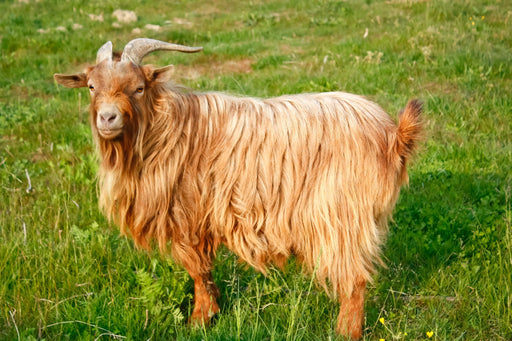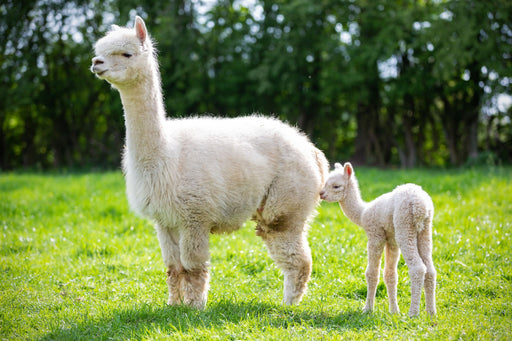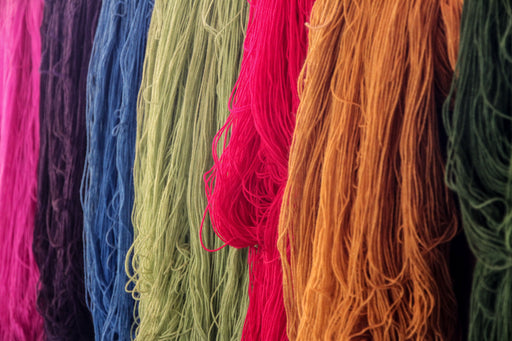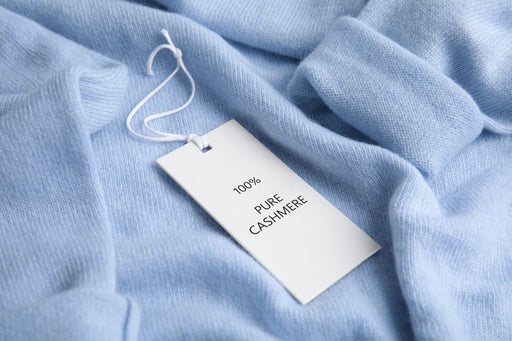Alpaca vs. Cashmere: What’s The Difference?

If you were asked to describe the differences between alpaca and cashmere on a game show for cash, could you? Seconds are ticking down! What do you say? Both luxurious fabrics are warm, soft, durable, and even water-resistant.. You may have a closet draw full of your favourite Cashmere and Alpaca sweaters, but do you know which is which?
So, let’s take a closer look at the differences between cashmere and alpaca wool.
Cashmere Has Quality Differences
We all love that feeling of being wrapped up in beautifully cosy and luxurious woollens and as you may already know, cashmere comes from Kashmir goats. Their wool makes the soft, durable fabric that has been revered around the world for centuries. The quality of the goat’s coat reflects the quality of the fabric. The fibres have to be within a certain length and texture to form the most superior garments, and that means raising only the healthiest, purest bred goats.

Furthermore, because of the increased popularity and demand for cashmere, countries like China have increased production, resulting in higher quantity but lower quality cashmere flooding the market. Cashmere blends have also been introduced to cope with increasing demand. So, you can now find three levels of cashmere, as well as knock-offs and synthetics designed to mimic its softness, warmth, and insulating properties.
Alpaca, on the other hand, is far less mainstream. This means that most alpaca products are 100-percent alpaca.
Alpaca Is Much More Rare
Is it a camel? Is it a Llama? It could be that it’s an Alpaca. Unlike Kashmir goats, alpacas are a slender-bodied animal that look like the smaller cousin of both llamas and camels. They come from South America, but you can find alpaca farms throughout the world.

Interestingly, in spite of cashmere’s expensive price tag, alpaca is actually the rarer fabric. We can thank the popularity of cashmere with consumers for that. Due to the increased demand, the population of Kashmir goats has gone up dramatically. In 2015, Mongolia alone had 23.6 million goats! Alpacas, however, have an estimated global population of 3.5 million, with Peru holding 87% of the population.
Peruvians have been utilising alpaca fur for centuries, but alpaca wool is not yet well known throughout the rest of the world. It is only now gaining momentum because of attention given by high-end fashion designers. Names like Max Mara, Armani, and Loro Piana are currently advocating alpaca over cashmere.
High Quality Cashmere Garments Are More Expensive
Depending on the quality of the cashmere, a single garment could cost a couple hundred or thousands of dollars so get your wallet ready! Right now, cashmere is a premium fabric.
With Alpaca being far less mainstream, demand hasn’t yet pushed prices up as high as the highest quality cashmere. You will however find Alpaca for similar or higher prices than some mid-range Cashmere fabrics.

With so much lower quality Cashmere being brought to market at a low cost, Alpaca will almost certainly be more expensive than these high volume Cashmere garments with lower quality fibres and Cashmere blends.
Alpaca therefore presents an opportunity to get your hands on a luxurious feeling fabric without the expense of 100% high grade Cashmere.
Alpaca Is More Durable
You have to also consider pilling. You know that horrible feeling when you discover your favourite sweater has bobbles all over it? Pilling happens when shorter fibres become entangled in one another. low quality cashmere that is less than 4 cm long will certainly pill if met with enough friction. Alpaca fibres are between 8-12 cm long, meaning pilling is far less prevalent.
Basically, high-end cashmere and alpaca wool are equally strong and durable. But, low quality cashmere can’t compete against alpaca.
Cashmere Is Less Sustainable
If you have environmental concerns then you may decide your next garment purchase is made from alpaca. Cashmere is produced from goats who are bred in massive quantities for their cashmere fibres, and that means that hundreds of thousands of acres of land are being developed to make room for them. In fact, the grasslands of China and Mongolia have reportedly been decimated because of this. Meanwhile, alpacas are free to roam their natural landscape. Their padded feet don't cause damage to the habitat, either.
Less resources are needed to raise alpaca. They also produce far more wool than Kashmir goats. In fact, a single alpaca can produce enough wool for 4-5 sweaters, while four Kashmir goats are required for a single 100 percent cashmere garment.
Also, alpaca is available in 22 natural variations of colour. Cashmere wool is limited to three natural colours and must be dyed.

Alpaca Offers Better Insulation
When you buy for your winter wardrobe what guides your purchasing decisions? If warmth is key then Alpaca is your friend. There is also a biological difference between cashmere wool and alpaca. Alpaca fibres have a hollow core that traps air inside. When that happens, the fibres heat up rapidly and hold onto the heat for longer. Those microscopic air pockets also make alpaca more breathable than cashmere, so you stay comfortable.
Cashmere is also insulating and breathable, but it doesn't have this structure and cannot insulate as much as alpaca can.
Which Should You Choose? Alpaca or Cashmere?
While it will always remain that cashmere is soft, luxurious, and hypoallergenic, especially 100 percent cashmere, we cannot overlook just how fabulous alpaca truly is. Both materials are durable, insulating, warm, and comfortable. That said, if you’re looking for something that looks and feels amazing without the impact on the environment, choose alpaca.

Alpaca is soft, luxurious, insulates better than Cashmere and a more sustainable option than all grades of cashmere, and you know you are always getting wonderful quality with low quality blends of Alpaca not currently available.
When choosing cashmere, opt for higher end, without any synthetic blending. Also, it is possible to find sustainably sourced cashmere. You may just need to look that bit harder! Don't forget to care for your cashmere clothes so they last a long time.
Either way, you're getting a wonderful material that will stand the test of time in fashion and durability if cared for correctly, especially if kept protected from moths!
About MothPrevention
MothPrevention® speak to customers every day about their clothes moth issues - clothes moths are a species that are ever increasing and that can cause significant damage to clothes, carpets and other home textiles.
To date, we’ve helped over 250,000 customers deal with their moth problems. We have developed professional grade solutions including proprietary pheromones and trap design engineered to the highest production standards.





